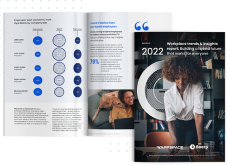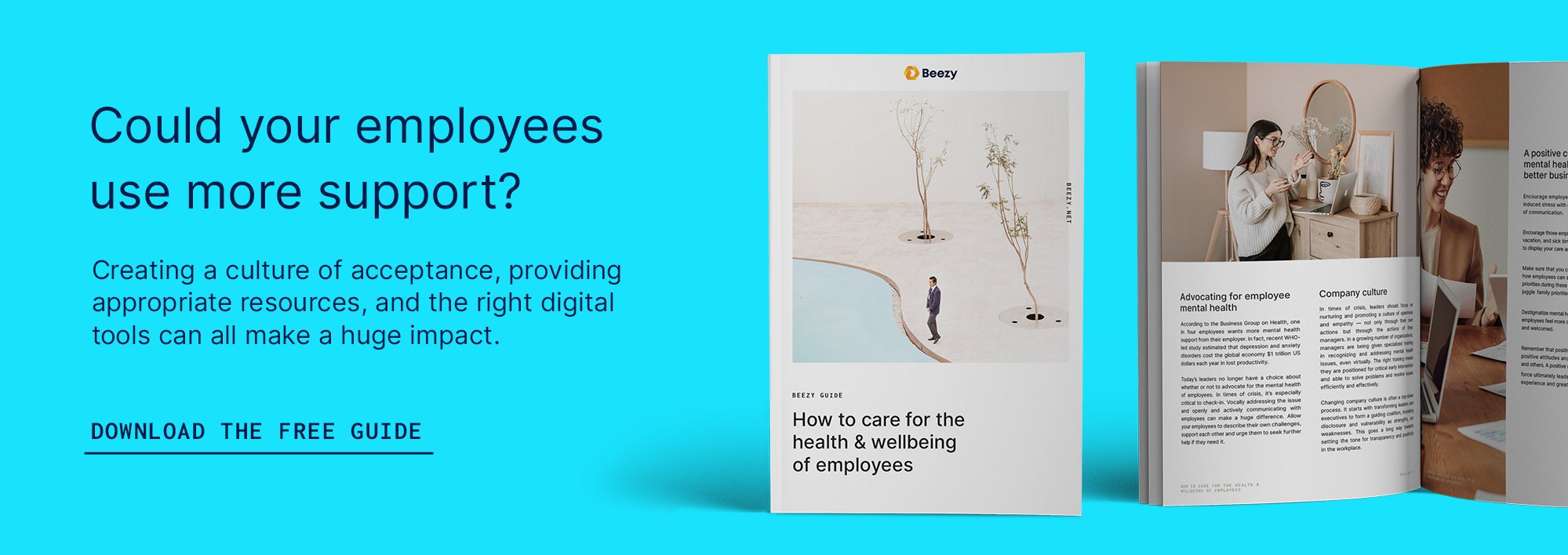
7 signs your digital workplace is toxic and how to fix it
Mike Hicks
March 25, 2021If the last year has taught us anything, it’s that there’s almost no part of the modern office that can’t be replicated online. This includes the good, the bad, and the ugly – even toxic workplaces.
Pinning down exactly what makes a workplace toxic can be hard, but it’s all too easy to tell when you’re in one. As anyone with first-hand experience knows, they don’t just make you dread Mondays. Every day becomes a challenge.
These negative work environments breed stress, resentment, and burnout, which reached record-high levels last year.
A toxic digital workplace can be even more insidious, especially now that we’re all relying on remote working. With the boundaries between work and home more blurred than ever, it’s hard to switch off, and unchecked toxicity can quickly seep into employees’ personal lives.
So, how do you spot a toxic digital workplace? And how can you fix it and improve the employee experience?
1. No clear culture or mission to rally around
Most people need a ‘why’. Why are we here? Why is this company the right place for me?
When there’s no culture to attach themselves to – or when the culture you claim to have doesn’t align to the reality – staff can quickly start to feel isolated and lacking in motivation. The more ill-defined space there is in a company, the more likely staff are to fill it with their own worries and assume the worst, leaving them second guessing themselves and their colleagues.
Using your digital workplace to promote a positive culture gives staff something to rally around, and a sense of purpose beyond their day-to-day tasks. It also sets clear standards for behavior, which can help stop a toxic workplace from developing.
As this Forbes article notes: If a strong brand is the outcome of a good customer experience strategy (CX), then a strong culture is the outcome of a good employee experience (EX) strategy.
Tip: Encouraging employees to build communities for social activities – not just work-related things – can be a good way to nurture culture and inject a sense of fun. On that note, it's a good reminder for people to not take themselves too seriously.
2. Role definitions are unclear
Similarly, it’s important that every individual knows exactly where they fit into the organization.
When role definitions are unclear, people can never be sure they're meeting expectations, leaving them anxious and confused.
All too often, employees end up needlessly overworking, or simply shrugging off tasks they don’t like. This can also lead to miscommunication, and cause problems between departments.
Tip: Make role definitions clear and available to everyone. This information should be located in a place everyone knows where to look.
3. All communication comes from the top
Yes, it’s important to hear from the boss.
But when communication flows in only one direction, you’re talking at employees, not with them. Not being given the chance to engage can leave your staff feeling frustrated and massively undervalued.
How can your digital workplace help?
Tip: Give staff an open space to share their suggestions, ideas, and stories so they know you value their views. This, in turn, will make them more likely to volunteer thoughts or share content that might be relevant to their peers, creating a positive culture of knowledge-sharing, where everyone feels listened to.
4. Fractured departments
Ensuring proper communication across the workforce is another essential part of creating a positive employee experience.
Even in the best workplaces, different departments may not always see eye to eye. But an overly siloed digital workplace can quickly turn toxic. Without an idea of what other people are working on, it’s easy for colleagues to pick faults or let resentment build up.
Tip: To avoid a breakdown in communications and a drop in productivity, use your digital workplace to create communities and other collaboration spaces that foster respect between colleagues. With clear channels, they can not only see what everyone else is up to but can lean on each other for advice and support.
5. Egos run wild
There's nothing wrong with big personalities. But when egos start to take over, it's a nightmare for everyone involved, especially the senior members of staff who end up wasting valuable time managing personal disputes. Not to mention, these disputes can easily lead to more serious issues, like accusations of harassment or bullying.
Egos get in the way when staff are insecure. They might be worried about their job or feel as if they’re always having to defend their decisions. Return some sense of order and use your digital workplace to give people an appropriate outlet, where they can share their thoughts and frustrations with bosses and colleagues.
Tip: A clear company culture can help here too. When people feel part of something bigger than themselves, it's much easier to put their egos aside for the greater good.
6. Diversity is an afterthought
When digital workplaces aren't properly managed, it's dangerously easy for diversity to suffer. If one group dominates every discussion, everybody misses out on different viewpoints and new ideas.
Of course, it’s going to take far more than an intranet to solve this issue, but linking up communities from different locations can help make sure everyone gets to contribute.
Tip: Giving everyone an equal voice can go a long way in improving employee experience and making sure your digital workplace is truly reflective of your values.
7. Overworking is valued over hard work
Of course you want to praise people for going the extra mile. But it’s important to recognize that hard work doesn’t always mean working late.
Many employees will be quietly grinding away, day in, day out. If we don’t show these people a little appreciation it sends out a toxic message, reinforcing the idea that the only way to get noticed is by working extreme hours.
This kind of unsustainable overworking leaves employees more stressed, less productive and – worst of all – miserable. We talked about employee mental health in a previous article, and it's an issue that needs to be on every organizational leader's radar.
Tip: Using your digital workplace to shine a spotlight on people’s everyday efforts reminds staff that you’re paying attention and makes them feel valued. Features that allow you to praise colleagues go a long way. No overtime required.



